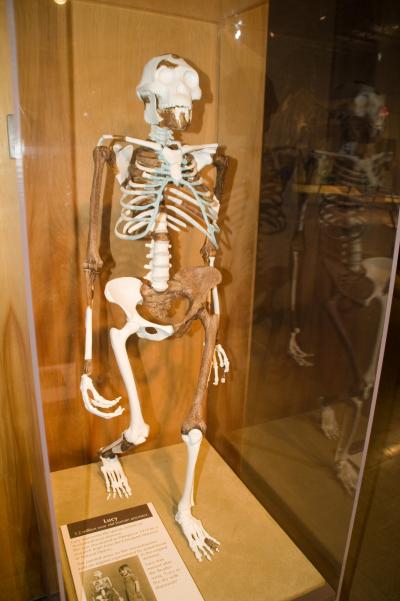
Today, 41 years ago, Lucy was discovered. Her skeletal remains provided scientists with invaluable information regarding the human race and its evolution, and Google is celebrating this day with a Doodle.
Lucy Australopithecus has been proven to have lived around 3.2 million years ago in Ehtiopia. The Google Doodle dedicated to her today shows three stages of Lucy's evolution. Currently, Lucy's bones are kept in a museum in Ethiopia.

Here's more about our ancestor Lucy:
1) 'Lucy' was the first Australopithecus afarensis skeleton ever found. Australopithecus afarensis is a species that shares both human and ape characteristics that lived between 3.9 and 2.9 million years ago. Around 40 per cent of Lucy's remains were discovered intact.
2) Do you know who named her Lucy? Paleoanthropologist Donald Johanson named the fossils Lucy after the Beatles song ' Lucy in the Sky with Diamonds.'
3) Lucy is a crucial stepping stone between apes and Homo Sapiens. It was exactly 41 years ago from today when the oldest known example of a bipedal primate came into the knowledge of humans.
4) Lucy had numerous similarities with chimpanzees.The skeleton revealed that she mostly walked upright. Bipedalism, walking using two rear limbs or legs, is a key distinction between Homo Sapiens and chimpanzees.

5) According to National Geographic, with a mixture of ape and human features - including long dangling arms with pelvic, spine, foot, and leg bones suited to walking upright - slender Lucy stood three-and-a-half feet tall.
6) Lucy is determined as a female due to her size. Fossils that were discovered later were larger in size and were identified as males.
7) Lucy was fully grown, for her wisdom teeth were very human-like. They were exposed and had been in use for a while before her death.







![BJP's Kapil Mishra recreates Shankar Mahadevan’s ‘Breathless’ song to highlight Delhi pollution [WATCH] BJP's Kapil Mishra recreates Shankar Mahadevan’s ‘Breathless’ song to highlight Delhi pollution [WATCH]](https://images.catchnews.com/upload/2022/11/03/kapil-mishra_240884_300x172.png)

![Anupam Kher shares pictures of his toned body on 67th birthday [MUST SEE] Anupam Kher shares pictures of his toned body on 67th birthday [MUST SEE]](https://images.catchnews.com/upload/2022/03/07/Anupam_kher_231145_300x172.jpg)






